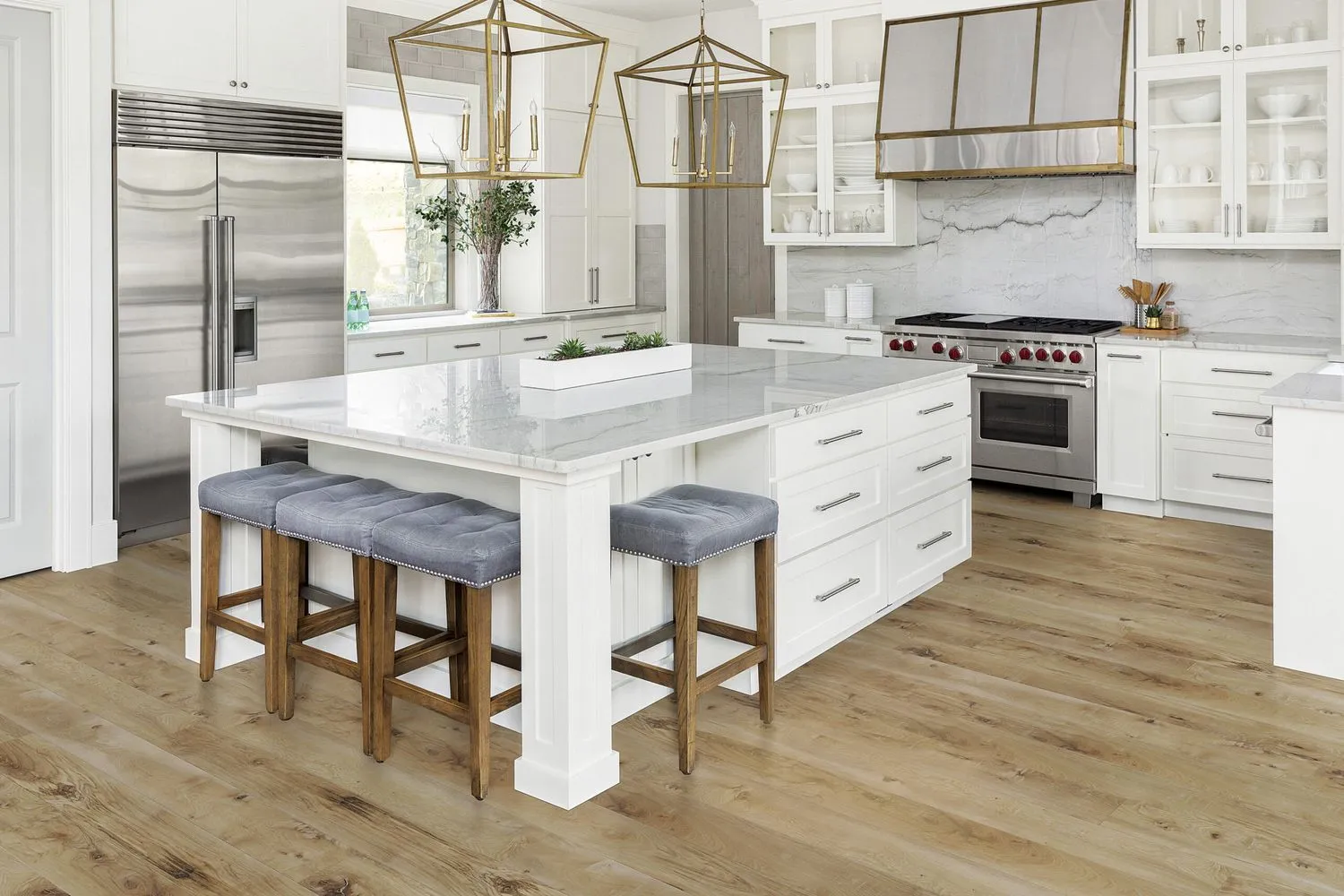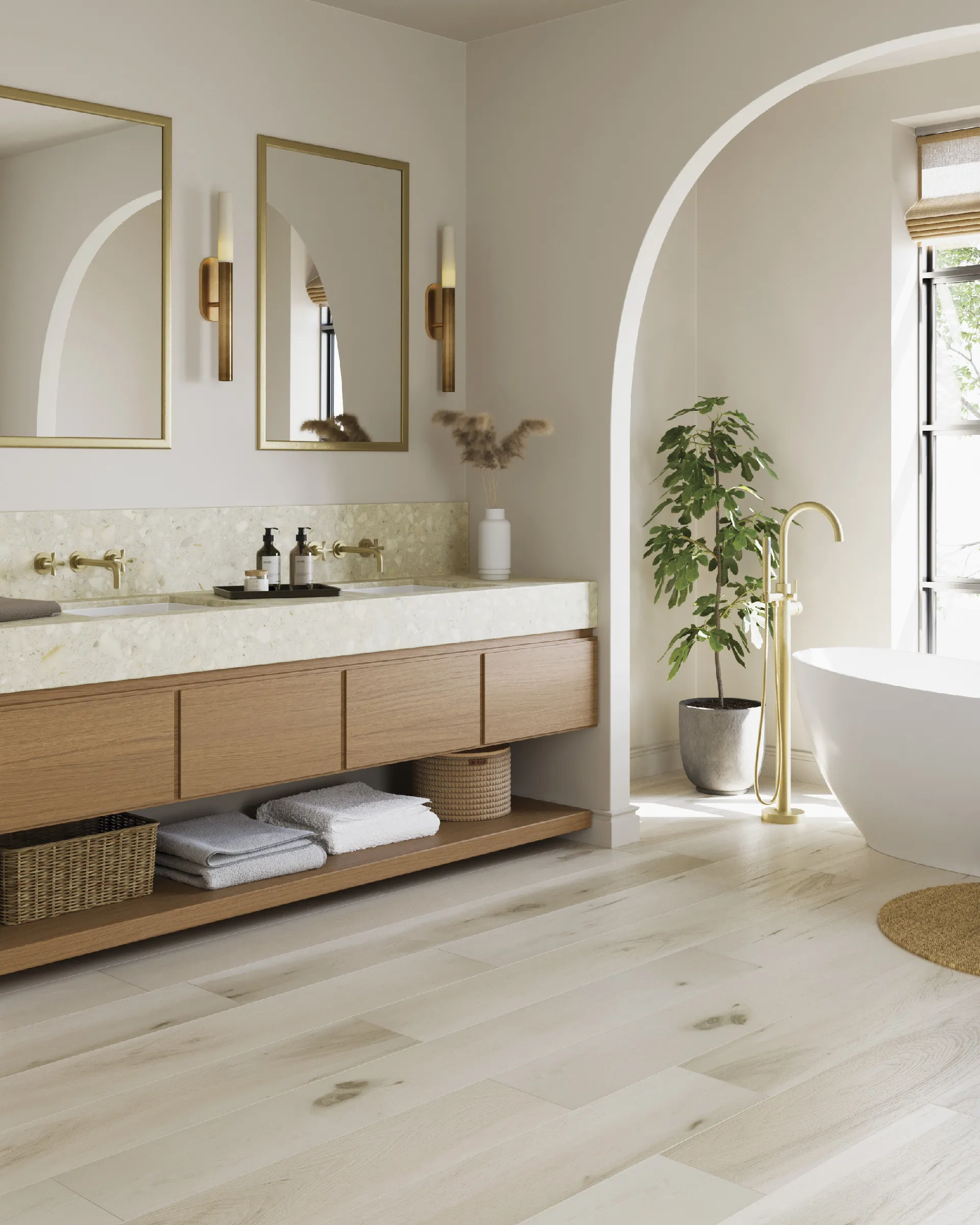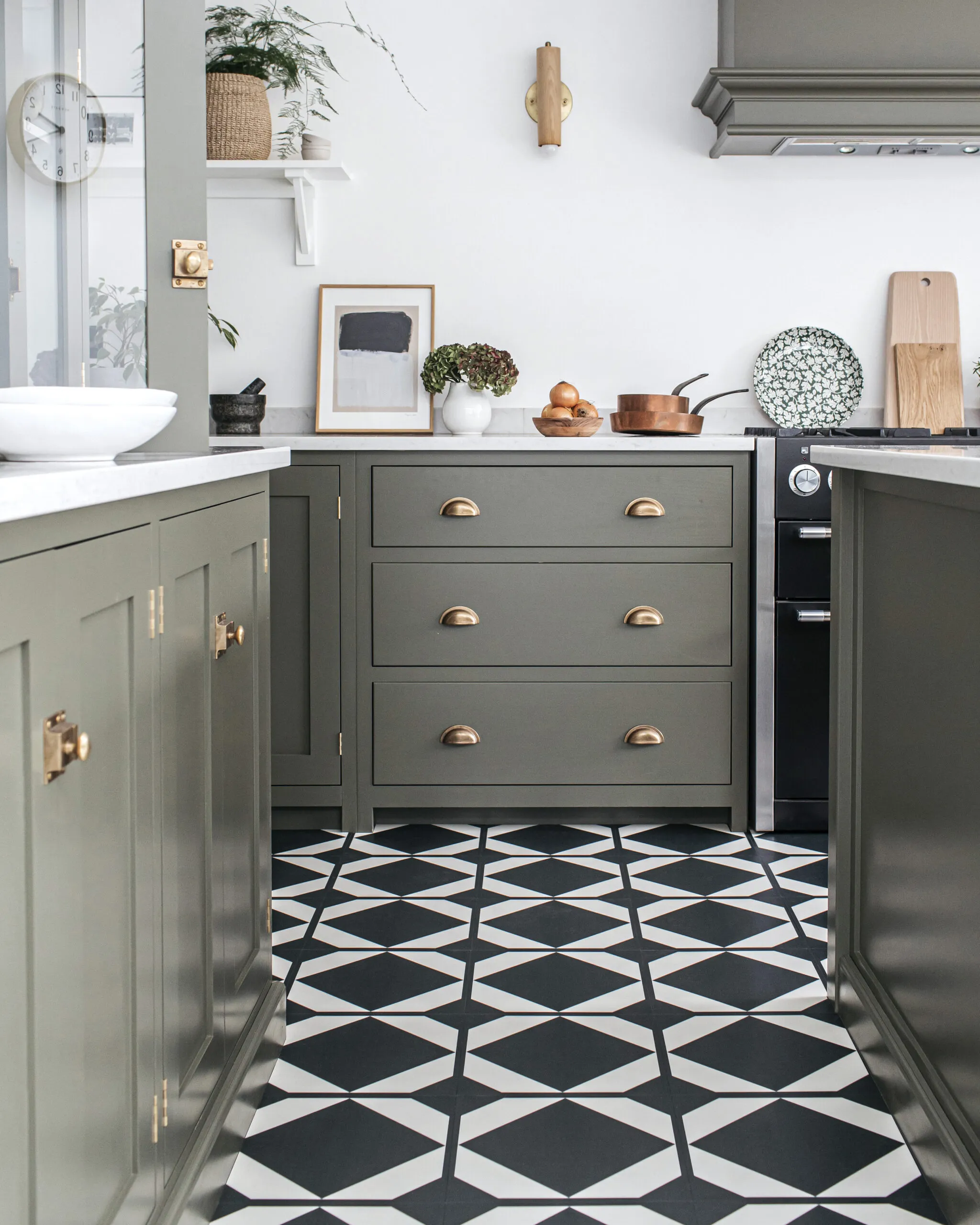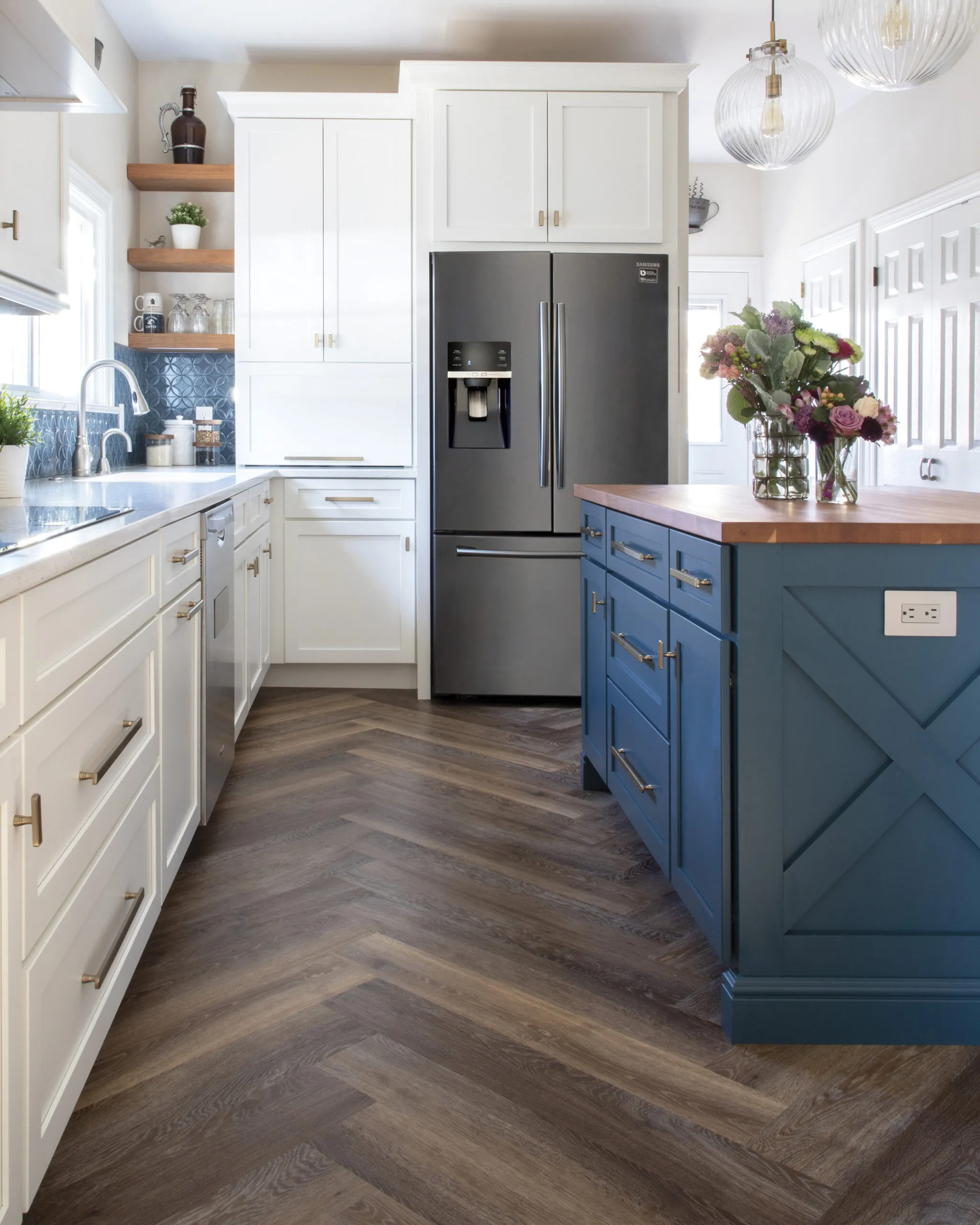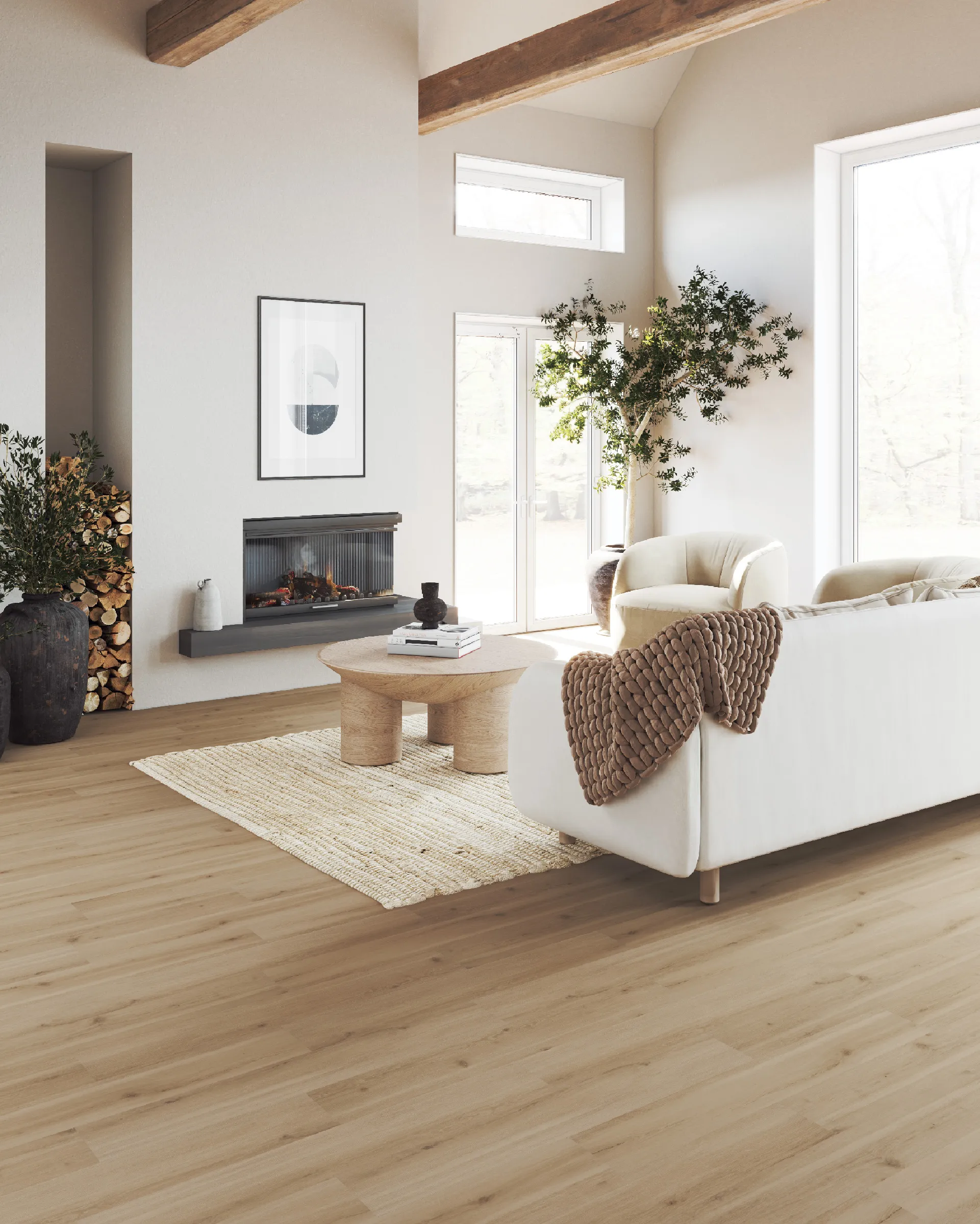Luxury vinyl flooring has become increasingly popular among homeowners seeking a durable, attractive, and cost-effective flooring solution. This versatile option mimics the look of natural materials such as hardwood and stone while offering superior water resistance and easy maintenance. In this guide, we’ll explore different luxury vinyl types, their benefits and drawbacks, installation methods, and how to choose the right option for your home.
Luxury Vinyl Types and Composition
Luxury vinyl flooring comes in two main types: planks and tiles. Both options offer realistic looks and textures, but their compositions and installation methods vary.
Luxury Vinyl Plank (LVP)
Luxury vinyl plank (LVP) is designed to replicate hardwood flooring’s appearance. These planks come in various widths and lengths, often featuring realistic wood grain patterns and textures. LVP is an excellent choice for homeowners who want the look of hardwood without the maintenance concerns or high costs.
Luxury Vinyl Tile (LVT)
Luxury vinyl tile (LVT) mimics the appearance of natural stone or ceramic tile. These tiles come in various shapes and sizes, allowing for creative installation patterns. Some LVT products even allow for grouting, further enhancing the realistic look of stone or ceramic tile.
Core Materials: SPC vs. WPC
Luxury vinyl flooring’s core materials influence its performance and durability. Here are the two main types of cores used in luxury vinyl products:
- Stone plastic composite (SPC): SPC cores, introduced in 2017, contain limestone mixed with PVC and stabilizers. This creates a denser, more rigid plank that offers superior dent resistance. SPC cores are ideal for high-traffic areas or spaces with heavy furniture.
- Wood plastic composite (WPC): WPC cores are made from wood fibers, plastics, and foaming agents. This composition results in a softer floor that’s more comfortable and quieter underfoot. WPC cores are great for residential applications where comfort is a priority.
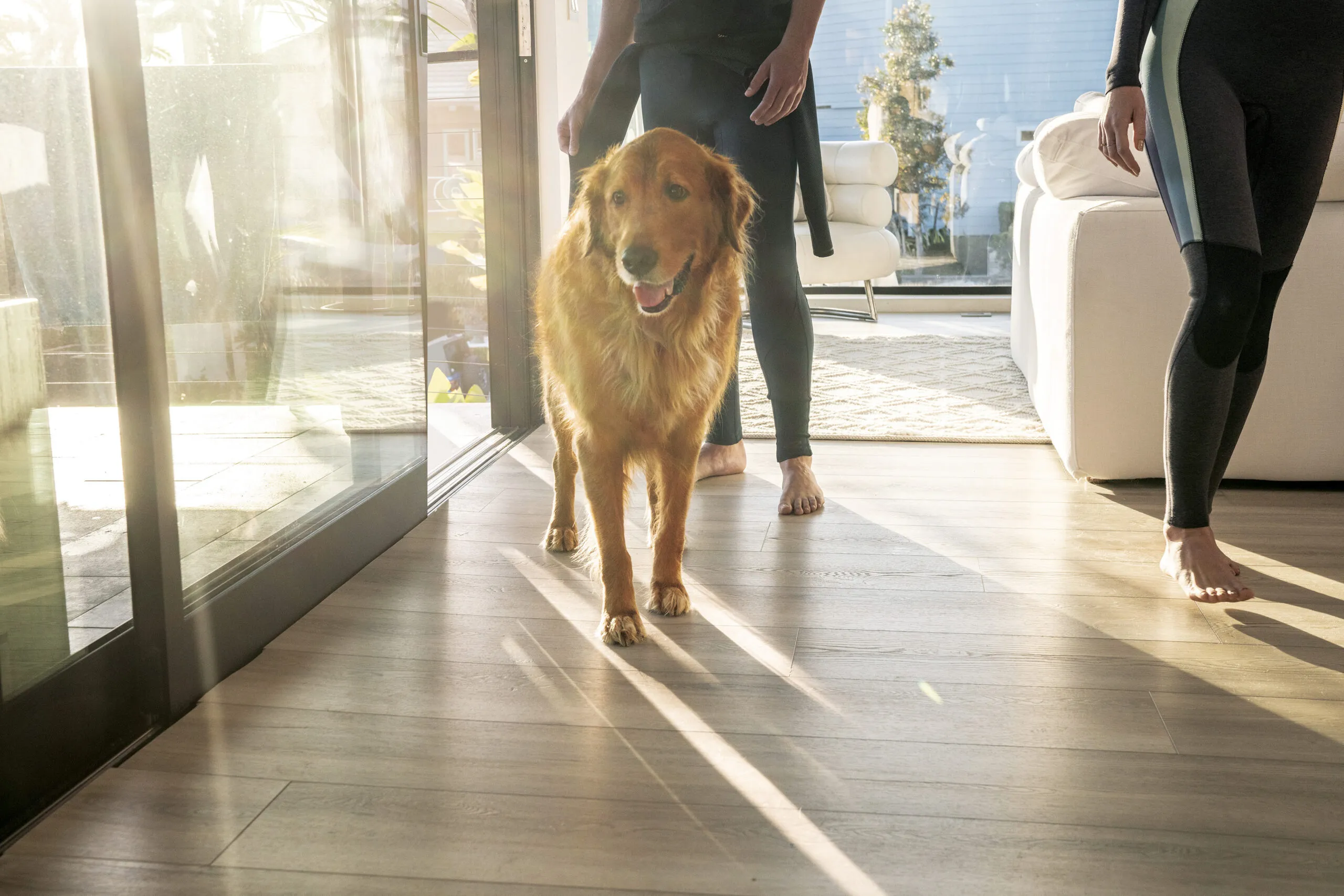
Benefits of Luxury Vinyl Flooring
Luxury vinyl flooring offers numerous advantages that enhance its appeal for many homeowners, including the following:
- Design flexibility: You can find wood-like planks up to 12 inches wide and 96 inches long—sizes that would be out of reach in hardwood and in finishes that are pricey to replicate on-site, including liming and whitewashing. Your design options include herringbone, basket weave, and parquet and you can cover a staircase in the same material. Diamond and hexagonal shapes enable patterned tile floors, as do printed designs that suggest marble or cement tile.
- DIY-friendly: Click-and-lock flooring outsells glue-down options due to easy installation. If you’ve installed tongue-and-groove flooring before and are willing to pay attention to the surface preparation—such as feathering the grout joints of an existing tile floor—you can install luxury vinyl without ripping up the existing substrate.
- Less expensive: Luxury vinyl is often more affordable than prefinished hardwood flooring and real stone tile. You can save even more by installing it yourself instead of hiring a professional.
- Low-maintenance: Luxury vinyl flooring is waterproof, making it easier to clean. Its tough polyurethane wear layer resists normal scratching, including from pets’ nails.
- Realistic look: Manufacturers have made strides in replicating wood flooring’s appearance, with improved high-definition photo-printed imagery and edges milled with microbevels to mimic those found on prefinished hardwood. You can even finish some stonelike tiles with grout.
- Resiliency: Luxury vinyl offers some slight give underfoot so you can stand on it more comfortably than on wood or stone. Its resiliency and padding make the floor quieter when you walk on it, a bonus in upstairs rooms.
Potential Drawbacks of Luxury Vinyl
While luxury vinyl offers many benefits, it does come with drawbacks, including the following:
- Can fade: Vinyl is susceptible to discoloration when exposed to direct sun, even in flooring that includes a UV inhibitor. Warranties typically do not cover this fading.
- Can still scratch or be cut: While luxury vinyl is durable, a dropped chef’s knife can cut it, a hot pot can melt it, and dragging furniture across it can scuff its finish—despite its improved scratch resistance.
- Can’t be refinished or repaired: Unlike wood flooring, you can’t refinish vinyl, though you may be able to bring back its luster. Replacing a damaged click-and-lock plank is relatively easy, but doing the same with a glued-down tile can be a headache.
- Comes with environmental concerns: Some consumers have concerns about vinyl flooring’s environmental impact. However, many manufacturers now offer products certified by FloorScore, an indoor air quality (IAQ) certification program. This certification indicates that the flooring meets strict standards for volatile organic compound (VOC) emissions and other environmental factors. Many manufacturers also make luxury vinyl flooring products from recycled materials to reduce their environmental footprint, with some manufacturers exploring bio-based alternatives to traditional PVC.
- Likely won’t add to resale value: While luxury vinyl tile can mimic the look of hardwood, stone, or ceramic tile flooring, it often doesn’t increase resale value the way those flooring materials can.
- Minimal compatibility with radiant products: While it doesn’t have tile’s mass, luxury vinyl’s thinner body can still transfer radiant heat. However, not all vinyl manufacturers recommend radiant product use due to the potential for expansion and color degradation. If it is compatible, you may have to keep your underfloor heat setting below 80 degrees Fahrenheit.
Installation Methods for Luxury Vinyl
There are two primary installation methods for luxury vinyl flooring: click-and-lock floating installation and glue-down installation.
Click-and-Lock Floating Installation
Click-and-lock flooring is popular among DIY enthusiasts because it’s relatively easy to install. This method involves connecting planks or tiles using a tongue-and-groove system, creating a “floating” floor that isn’t directly attached to the subfloor.
While click-and-lock systems are generally user-friendly, you’ll need a flat, clean subfloor to ensure a seamless installation. You can also use accessories such as transition strips and underlayment to enhance your floor’s final look and comfort.
Glue-Down Method
If you use the glue-down method, you’ll attach the vinyl directly to the subfloor using an adhesive. This method is ideal in areas with high foot traffic or where you’d like a more permanent installation. Some glue-down luxury vinyl tile (LVT) products allow for grouting, creating an even more realistic tiled appearance.
“Read the manufacturer’s instructions carefully,” says This Old House master carpenter Nathan Gilbert. “Some newer luxury vinyl products don’t need to acclimate—though I still like to allow for it—and the size of the expansion gap can vary.”
To ensure a successful glue-down installation, you’ll need to properly prepare the subfloor by ensuring it is dry, level, and debris-free and choosing an adhesive recommended by the flooring manufacturer.
Professional vs. DIY Installation
While many homeowners opt for DIY installation, particularly with click-and-lock systems, professional installation can ensure a beautiful, durable finish, especially for more complex layouts or glue-down applications.
Professional installers can address challenging areas such as intricate patterns or transitions between different flooring types. Their expertise can also save time and prevent costly mistakes.
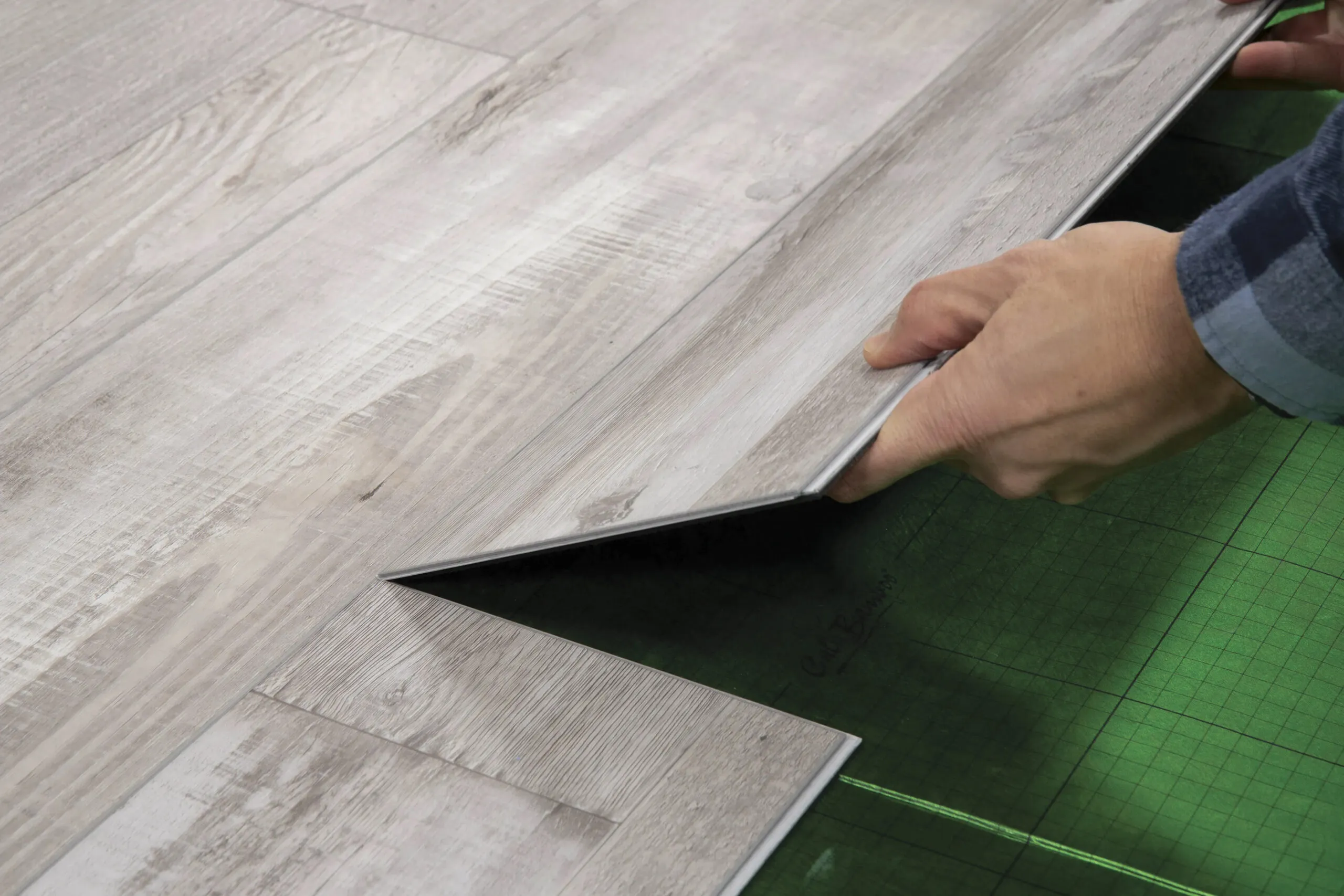
Choosing the Right Luxury Vinyl for Your Space
When selecting the right luxury vinyl for your home, you’ll need to consider several factors, including design options, specific room needs, and flooring longevity.
Design and Texture Options
Luxury vinyl comes in many designs, colors, and textures. From realistic wood grains to stonelike tiles, there’s an option to suit every preference. Some manufacturers offer hand-scraped textures and microbeveled edges for an even more authentic look.
Experiment with different sizes and patterns to add a unique touch to your space. For instance, you can use larger tiles in open areas and smaller planks in narrow spaces to create a visually appealing flow throughout your home.
Room-Specific Considerations
Consider each room’s specific needs when selecting luxury vinyl. For example, bathrooms and kitchens may benefit from products with enhanced water resistance, while bedrooms might prioritize comfort underfoot.
In addition to water resistance, consider factors such as slip resistance and thermal conductivity. For example, UV-resistant coatings can prevent color fading and keep the floor looking fresh for years in rooms with heavy sunlight exposure.
Wear Layer Thickness
The wear layer is a clear, protective topcoat that guards against scratches, stains, and general wear. Thicker wear layers generally indicate a more durable product, and you would measure wear layer thickness in mils—one mil is one-thousandth of an inch. Look for products with wear layers of at least 20 mils for high-traffic areas.
A thicker wear layer contributes to your floor’s longevity while enhancing its appearance by absorbing impacts and resisting indentations. This creates a more luxurious feel underfoot and maintains your floor’s aesthetics over time.
Comparing Luxury Vinyl to Other Flooring Options
Luxury vinyl offers many advantages, but we’ll outline how it stacks up against other popular flooring options to help you make your decision.
Luxury Vinyl vs. Ceramic Tile
Ceramic tile offers excellent durability and water resistance, much like luxury vinyl. However, luxury vinyl is typically warmer and more comfortable underfoot in living spaces or bedrooms, whereas ceramic tiles can be cold and hard. Luxury vinyl is also easier to install and replace if it sustains damage. Ceramic tile may offer a more premium look and feel in certain applications, while luxury vinyl’s softer surface and array of design options offer versatility in different home areas.
Luxury Vinyl vs. Hardwood
While hardwood offers timeless appeal and can increase home value, luxury vinyl provides a similar look at a lower cost and is easy to install and maintain. Luxury vinyl’s enhanced durability and water resistance are ideal for areas like basements and bathrooms, where hardwood would not perform well. However, you can refinish hardwood multiple times, potentially extending its lifespan beyond that of luxury vinyl.
Luxury Vinyl Flooring Design Ideas
Luxury vinyl can replicate everything from patterned oak floors to high-end stone and ceramic tile. Consider the following designs when deciding how to use luxury vinyl flooring in your home:
